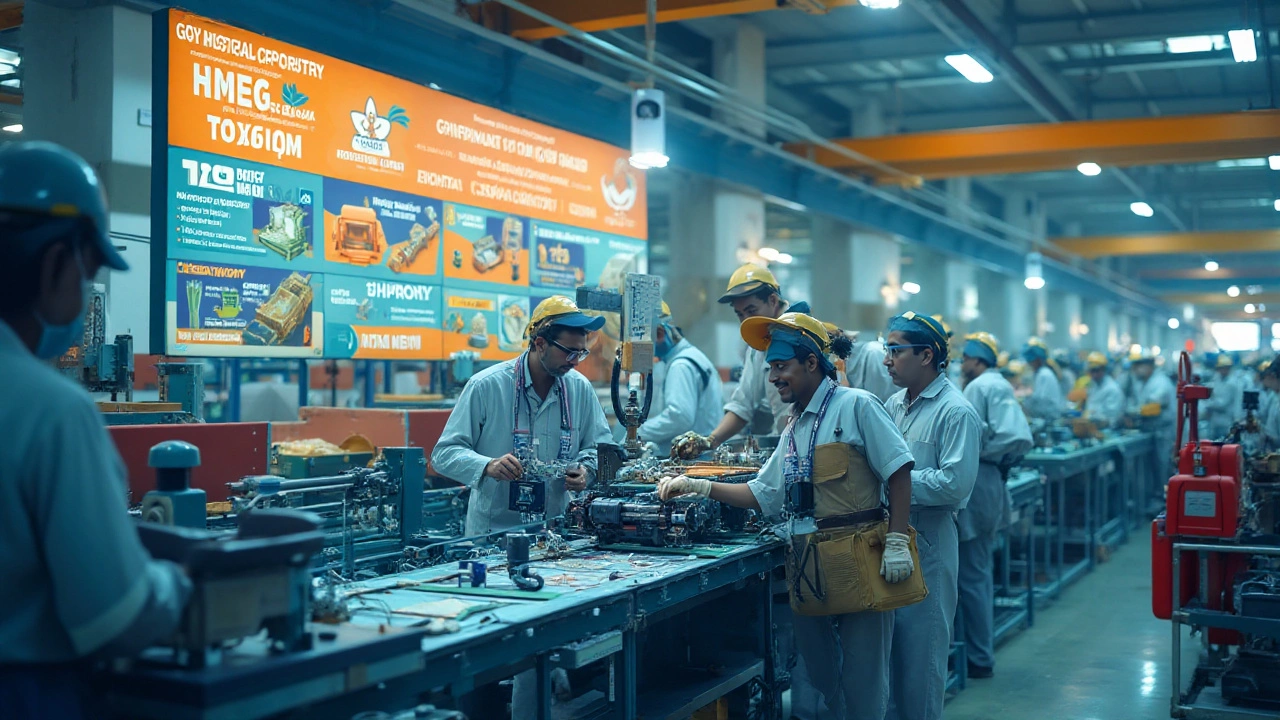Government Schemes Driving India’s Manufacturing Boom
If you’re thinking about starting or expanding a factory, the first thing you’ll want to check is what the government is offering. India’s policy makers have rolled out a string of schemes that lower capital costs, give you tax breaks, and help you access credit. The right incentive can shave months off your timeline and add thousands to your bottom line.
Top Schemes You Should Know
Make in India – This umbrella program bundles a range of state‑level benefits. Depending on the state, you might get land at subsidised rates, easier labor clearances, or even a portion of your electricity bill covered for the first two years.
Production‑Linked Incentive (PLI) Scheme – Designed for sectors like electronics, pharmaceuticals, and automotive parts, the PLI offers cash rewards based on the value of goods you produce locally. The more you sell, the higher the payout, which can turn a modest profit into a sizable one.
Technology Upgradation Fund Scheme (TUFS) – If you need to modernise old equipment, TUFS provides a soft loan of up to 15% of the project cost at a low interest rate. It’s a good fit for textile and leather units looking to shift to greener tech.
Credit Linked Capital Subsidy Scheme (CLCSS) – This one helps you get a 15% subsidy on the interest you pay for loans taken to buy plant and machinery. The paperwork is straightforward: submit the loan agreement and the subsidy is credited directly to your bank.
State‑specific Incentives – Many states run their own schemes. For example, Karnataka offers a 10% rebate on stamp duty for new industrial plots, while Gujarat waives certain environmental clearances for low‑pollution units.
How to Make the Most of These Incentives
First, map your project to the right scheme. Look at the eligibility criteria – turnover limits, sector focus, and location requirements matter. A quick check on the Ministry of Commerce website can save you hours of guesswork.
Second, keep all documents organized. Applications usually need proof of investment, GST registration, and a project report. Missing one paper can delay approval by weeks.
Third, involve a local consultant early. They know the exact forms, the right department contacts, and the typical turnaround time. Their fee is often covered by the incentive itself.
Finally, track the disbursement schedule. Some schemes release money in stages – after you’ve built the plant, then after you meet production targets. Setting up internal checkpoints helps you stay compliant and receive the full amount.
By aligning your business plan with these schemes, you turn government support into a competitive edge. It’s not just about lower costs; it’s about faster market entry, better technology adoption, and stronger cash flow.
Ready to explore the options? Start by listing the states you’re interested in, match them with the sector‑specific schemes, and then reach out to the relevant department’s help desk. The sooner you act, the sooner you’ll see real savings on the ground.

Manufacturing’s Impact: How Government Schemes Shape Our Everyday Life
Manufacturing isn't just about factories and machines—it's the engine behind daily life, jobs, and the stuff we use. This article breaks down how government schemes focused on manufacturing affect the way we live. Get real facts about job creation, innovation, and even unexpected places where these policies show up. Discover tips for families and workers on making the most out of changes in the industry. If you’ve ever wondered why your fridge, car, or phone keeps getting cheaper (or sometimes not), you’ll find answers here.
Read More
Manufacturing Money: Is There Real Cash in Government-Backed Production?
This article digs into whether manufacturing is still a goldmine—especially with all the government schemes floating around these days. You'll see what sort of cash flow is actually possible and where the profits really come from. It also uncovers which subsidies or incentives might tip the scales and what pitfalls to dodge. If you’re thinking about getting into manufacturing or just curious, this no-nonsense read clears up the money side fast.
Read More
Cheapest Spots to Build a Factory Right Now
Looking to build a factory without breaking the bank? Some regions not only offer low costs but sweeten the deal with government incentives. This article explores various locations that provide budget-friendly options for factory construction while highlighting government schemes that can maximize savings in the manufacturing sector. Learn how to take advantage of these opportunities and make informed decisions on where to set up your next manufacturing hub.
Read More
Leading State in U.S. Manufacturing: Insights and Innovations
Uncover which state currently leads the U.S. in manufacturing and how government initiatives are shaping the industry. Discover interesting facts about the state’s contributions and innovative practices driving success. Learn about the role of government schemes in bolstering manufacturing and get practical tips for businesses looking to thrive in this competitive landscape.
Read More
Manufacturing's Vital Role in Society
Manufacturing companies play a pivotal role in society by driving economic growth, providing jobs, and fostering innovation. They are at the heart of community development and contribute to infrastructure improvements. Government schemes often support these enterprises, helping them to remain competitive and sustainable. Overall, manufacturing is a cornerstone of both local and global economies.
Read More
How Manufacturing Fuels National Economic Growth
Manufacturing plays a pivotal role in boosting a country's economic stability by creating jobs, enhancing technological advancements, and stimulating investment. Government schemes often act as catalysts by providing incentives and favorable policies to promote industrial growth. The presence of a robust manufacturing sector can help improve infrastructure and increase exports. This article explores the multifaceted ways manufacturing contributes to a nation's well-being and progress.
Read More
Understanding Government's Role in the Manufacturing Sector
Manufacturing is a critical component of any economy, and understanding which government department oversees this sector can influence the effectiveness of related government schemes. This article explores the various government bodies responsible for manufacturing, how they work to promote industry growth, and the significance of these departments in implementing successful economic policies. By understanding the role of government in manufacturing, businesses can better navigate available resources and incentives.
Read More